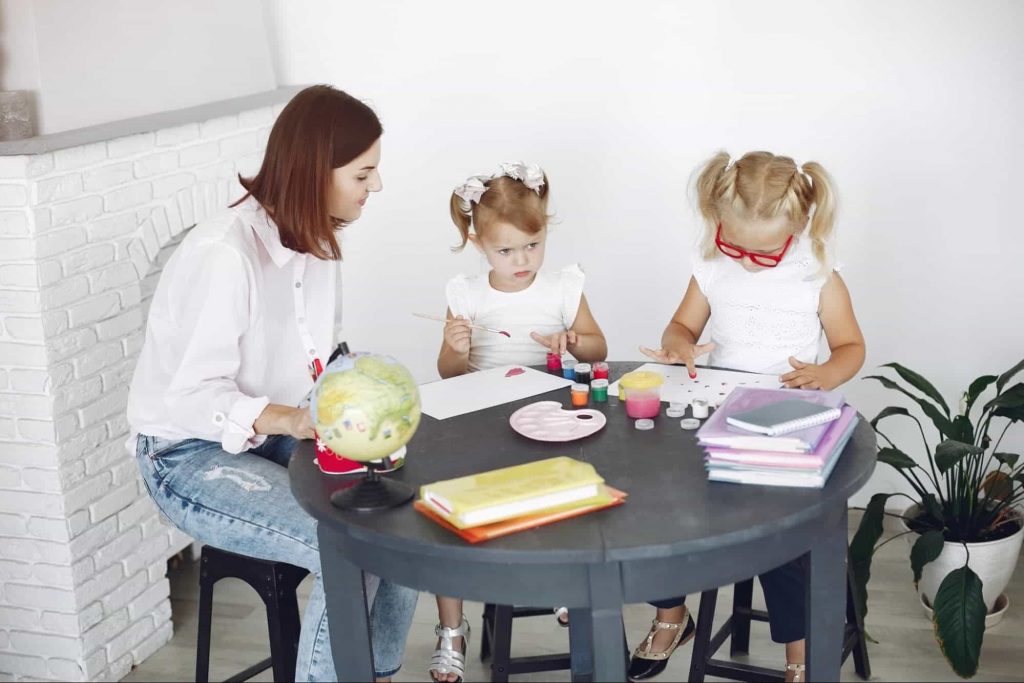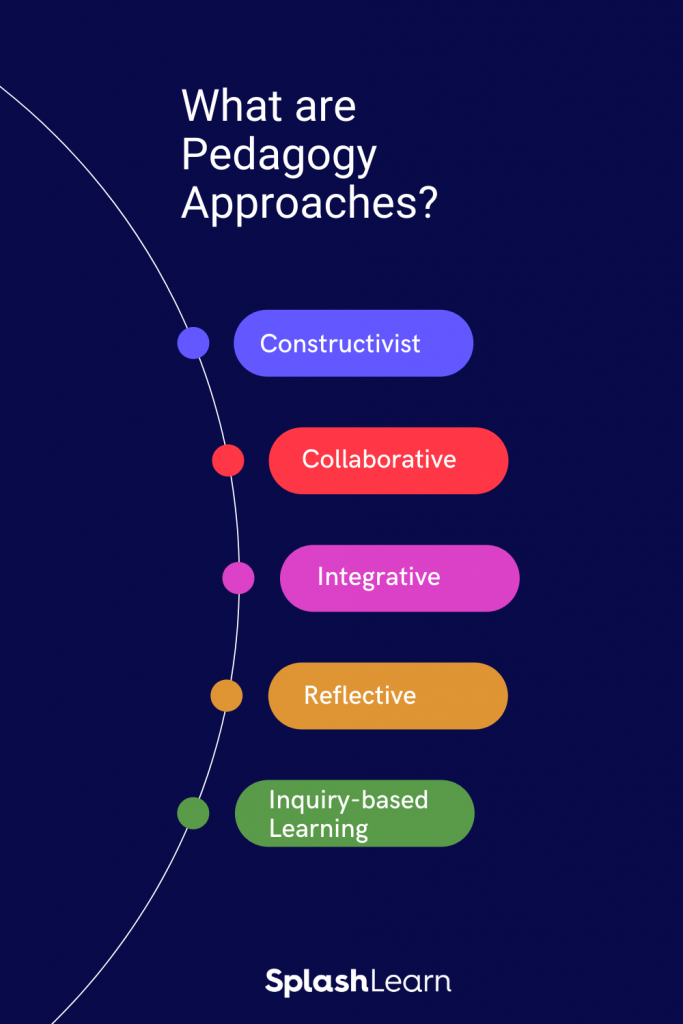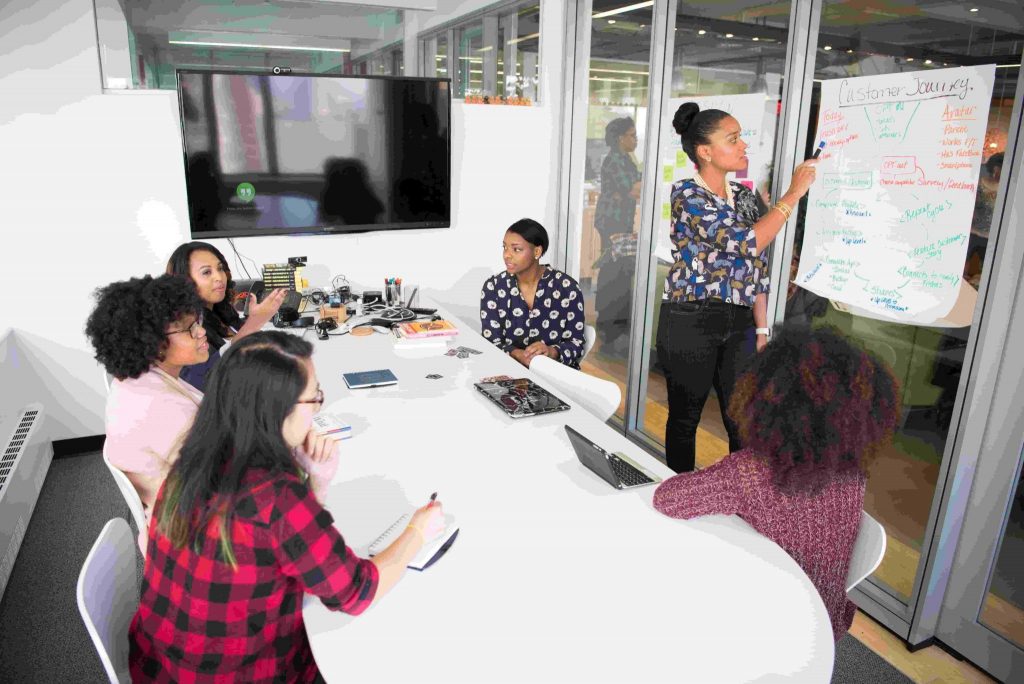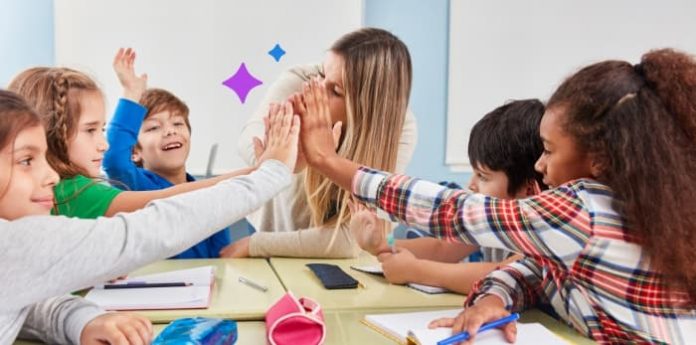“Teaching is not a lost art, but the regard for it is a lost tradition.” – Jacques Barzun.
Teaching principles and methods are both art and science. A teacher creates an interactive learning environment to inspire children using art. In schools, children learn different language skills and develop critical thinking abilities. Educationists require the right tools and methodologies to teach children, which is a science.
Math & ELA | PreK To Grade 5
Kids see fun.
You see real learning outcomes.
Watch your kids fall in love with math & reading through our scientifically designed curriculum.
Parents, try for free Teachers, use for free
Thus, teaching is an act of learning through discovery and different methods. Since art and science are constantly evolving variants, the concept of ‘pedagogy in education’ is now often discussed.
But what is pedagogy, and how does it impact development in education?
This blog post will help you understand pedagogy in education and how teachers can use it in a modern learning environment.
What is Pedagogy?
Pedagogy is coined from the Greek words ‘paidos’ (child) and ‘agogos’ (leader). So, pedagogy studies teaching and how the content is presented to students. It is the development of an educational process that helps learners gain knowledge.
Pedagogy definition includes the teaching practices and theories deployed to teach. It stimulates the unique interaction between teachers and students.
Pedagogy in education demonstrates teaching methods for both academic and theoretical aspects. Mainly, four core learning profiles fall under pedagogy in education:
- Auditory learners listen to the information presented to them in classrooms, and they learn from verbal instructions or audio recordings.
- Tactile learners acquire information through movement and touch. They prefer to learn via learning aids like educational devices.
- Visual learners see information and then visualize the relationship between concepts and ideas.
- Reading and writing learners prefer a traditional teaching approach. These learners read the text and write it to process information.
Importance of Pedagogy in Learning

The effective pedagogies are an amalgamation of various teaching techniques, such as:
- A complete guide for teachers
- Assessment practice
- Individual activities
- Whole-class activities, etc.
These pedagogies help to improve higher-order thinking and cognitive abilities among students. For example, at SplashLearn, we have a visual learning environment for students to utilize visual concepts like gaming and courses to learn new things. This helps teachers design effective visual learning strategies.
Pedagogy in education can impact learners and the learning process as follows:
1. Student-centered learning
Pedagogy is based on a student-centered approach. In this approach, students can learn at their own pace and take full responsibility for learning.
2. Constant performance assessment
Pedagogy allows teachers to evaluate individual students’ performance regularly. This will help teachers understand if a student is moving towards their target outcomes or not.
3. Fuel teamwork
This learning method encourages teamwork and collaborative learning among students. Pedagogy allows students to meet like-minded people and learn from their peers.
4. Boost cognitive skills
Pedagogy in education focuses on the evaluation, analysis, and compression that helps students develop cognitive skills.
Importance of Pedagogy in Teaching

Pedagogy in the teaching sector can play a game-changer role. Many studies have shown that pedagogy can support the high-level initiatives and resources required to prepare fearless learners for tomorrow.
Here are some benefits that teachers and students can find in pedagogy learning programs:
Related Reading: Best Teaching Strategies for 2022
1. Improves quality of education
If a student-centered pedagogy is deployed in the classroom, it can boost the quality of education. It allows students to take full responsibility for their learning. In addition, students can understand complex educational concepts at their own pace.
For example, suppose your child is slow at learning math. In that case, the teacher can use a pedagogy based on the child’s development to clear the concepts. Plus, if one pedagogy doesn’t work, a teacher can try something else.
2. Harnesses team learning
Pedagogy in education can motivate students to achieve a preset goal. This allows students to interact with like-minded people and gain a fresh perspective from other students.
Peer learning has always positively impacted students’ grades and overall development. Often students can learn better when in a casual and no-pressure environment.
3. No monotonous learning
It is not common knowledge that pedagogy and child development move together. It empowers students to consider different avenues and go beyond traditional learning methods.
Memorizing or cramming lessons will help students up to a certain extent. But when students learn to implement academic assignments in the real world, they will invoke creative thinking and analytical behavior. In addition, it makes students more adaptive to what teachers are teaching.
4. Learn in your way
A well-constructed pedagogy can allow students to capture education in several ways. First, teachers can use different pedagogies to teach students.
Students can follow their desired way of learning and better understand the subject. For example, SplashLearn has created visual games to help students understand math concepts interactively.
5. Convenient for special students
Pedagogy in education can benefit students with special needs to acquire knowledge. Using suitable pedagogies, teachers can help special students to learn and encourage them to adopt mainstream learning communities.
Suppose a child needs extra help due to their medical conditions. In that case, teachers can use online tutoring or recorded videos to help the student.
6. Improves student and teacher communication
Pedagogy means understanding your students and then helping them. For this, teachers and students have to communicate a lot. It will allow teachers to focus on student’s weaknesses and create a curriculum to guide them better.
Popular Pedagogy Approaches for Teachers
Pedagogy in teaching helps create a self-paced, engaged and immersed learning environment. But that’s only possible when the core components of pedagogy are used to build a progressive learning environment.

Here are common pedagogy approaches that teachers can use:
1. Constructivist
This is an innovative pedagogy approach in education where students are present in the process of gaining and understanding knowledge. When students are involved in the academic curriculum creation process, they can receive information faster.
Constructivist approaches also nurture critical thinking capabilities among students. They can learn in a comfortable and familiar environment.
2. Collaborative
As the name suggests, the students form a group of like-minded pupils to learn together. They can build strategies, complete projects, solve problems, and brainstorm new ideas.
Collaborative pedagogy can enhance the intellectual efforts of students and help them gain fresh perceptions. This pedagogy also boosts team spirit and builds peer relationships.
3. Integrative
The integrative pedagogy approach allows students to learn by connecting their learning across horizons. Integrative teaching methods have four main objectives:
- Understand the learning process
- Divide problems based on relevancy
- Showing the use of the theoretical lessons in practical scenarios
- Incorporating concepts into normal routines
4. Reflective
This is an exciting approach in which students evaluate themselves. It means students will observe the activities of teachers and other students in the classroom. This will help students understand why they do certain things and how it works.
Reflective pedagogy is the best way for students to self-learn. In addition, it can develop analytical skills among students.
5. Inquiry-based Learning
This is an approach for educators. They answer not only questions of the students but also create a culture for students to explore, challenge, and refine themselves.
The inquiry-based learning method aims to shift students from aimlessly questioning to understanding the answers and then raising questions. This strategy provides confidence to students to ask questions without any hesitation.
Various Perspectives of Pedagogy

Besides the standard five pedagogy approaches in education, different perspectives of pedagogy are essential to learning. For instance:
1. Social Pedagogy
Social pedagogy provides a holistic perspective to deal with children and their families. This helps teachers to focus on a child’s well-being and academic growth.
An example of social pedagogy is how countries adopt social education to teach the importance of compassion, empathy, etc.
2. Critical Pedagogy
It is a philosophy that persuades a teacher to motivate students to follow a critique structure of power and oppression. Paulo Freire, the father of critical pedagogy, advocates that critically conscious people are the founders of social changes and liberation.
Teachers can include critical pedagogy using audio-visual material to encourage learners to look into global issues like war and religion.
Related Reading: Benefits of Culturally Responsive Teaching
3. Culturally Responsive Pedagogy
In culturally responsive teaching, teachers take inspiration from the student’s culture and teach them cultural values accordingly. Educational institutions often change policies and procedures to support cultural pedagogy.
Culturally responsive pedagogy encourages students to understand different cultures and races and develop open attitudes towards diversity.
Innovative Ideas to Practice Pedagogy in Education

Pedagogy enables teachers to capture students’ interests and create a progressive learning environment. Using different pedagogical methods, teachers can help students learn at their own pace. However, teachers have to use innovative strategies to leverage pedagogy in education:
1. Touch creativity
One of the most straightforward yet innovative pedagogy strategies is to use creativity to improve students’ engagement levels. Using creative teaching methods, you can excite the artistry bone in your students.
Today, you have numerous creative tools available to teach your students, such as visual exercises, video games, interactive videos, etc. Using digital creative tools, you can hold your student’s interest for a more extended period and teach them different lessons easily.
2. Brainstorming
Brainstorming is an inclusive pedagogy in education to build the confident personality of students.
When students can share ideas with their teachers without fear or hesitation, it will boost their confidence. They will brainstorm more ideas and present them to teachers. This practice will build a confident character in students, but it will also challenge their brains to think of new ideas to approach the same problem.
3. Use AV teaching tools
The education sector has accepted technological advancements for a long time now. You can find various technologies in the educational sector today, such as artificial intelligence, machine learning, and more.
For pedagogical strengthening, audio and video tools are highly useful. These tools not only improve the listening and observing skills of students. But they can also enhance their imagination with visual effects, graphical interpretations, and brain mapping.
Students can understand concepts better with video and audio support. They can explore topics in-depth with proper teaching tools.
4. Outdoor classrooms
Taking your class outdoors can improve their imagination and senses. They can run through seeing things, experiencing new adventures, and interacting with real people. This pedagogy approach will strengthen the interaction and engagement of students in your class to a great extent.
5. Exploit hobbies
When you cannot teach a student with traditional teaching methods, you should take a personalized approach to understand the students first and then teach them. Under this method, you can use students’ hobbies to teach them a new lesson.
For example, making students understand the life cycle of a butterfly is a bit tricky. But, if you organize a drawing competition in your classroom to draw a butterfly life cycle, this artistic approach will greatly help you.
The Future of Pedagogy in Education
The education sector has evolved a lot in the last few years. Many factors have contributed to this change, such as female empowerment, technological advancement, social changes, etc.
Therefore, teachers can’t drive the desired output from students using only traditional teaching methods. A student-centered approach is the foundation of a new educational environment. Teachers need to develop a personal relationship with students to understand their strengths and weaknesses to create a progressive school culture.
So, pedagogy in education that offers meaningful learning via educational concepts, competencies, content, and evaluation is paramount.
In parting words, we would like to suggest teachers think of pedagogy as a sharp weapon that can help them create innovative students for tomorrow.
Related Reading: Best Tips & Strategies to Teach English Language
Frequently Asked Questions (FAQs)
What is the difference between pedagogy and teaching?
People often get confused between pedagogy and teaching. Pedagogy is a set of practices for teaching. However, educationists use teaching methods in real time to provide knowledge and skills to students.
How to apply pedagogy in your classroom?
You need to challenge yourself and create an active environment in your classroom to apply pedagogy. You have to work on changing the overall environment of your classroom to implement the pedagogy.
What are the characteristics of pedagogy?
Besides creating an innovative educational environment, pedagogy has three main characteristics to consider while adopting pedagogy in your classroom. The three characteristics of pedagogy are educational principles and practices, psychological approaches to learning, and high-order thinking skills.
























